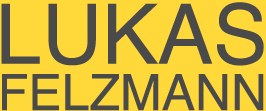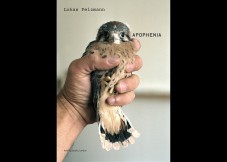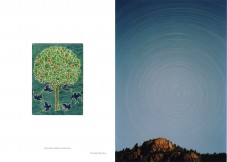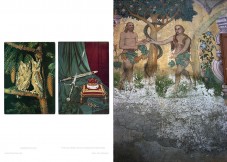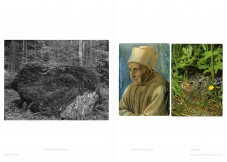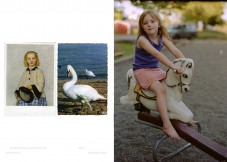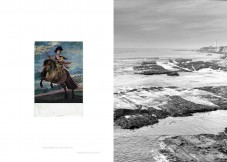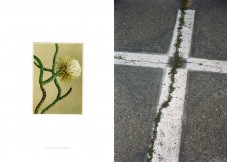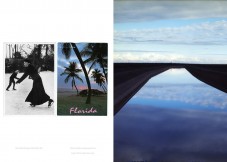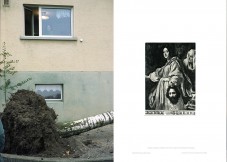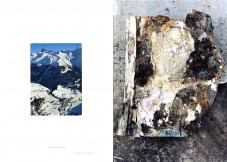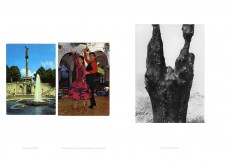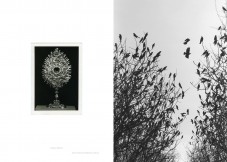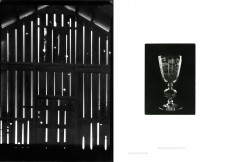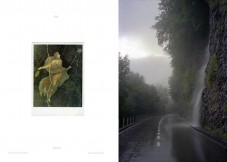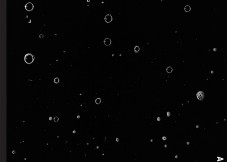Koenig Books, London, 2018 (Trade Edition)
Codax Publishers, Zürich (Special Edition)
English Text by Lukas Felzmann
German/English Text by Peter Pfrunder
24 x34 cm
196 pages
168 images
Hardcover
ISBN 978-3-96098-259-3
Printed in Switzerland
Available from the Publisher
Few signed copies form the Artist
Zenith & Nadir
Imagine that from your particular location you direct your gaze straight upwards. The imaginary point in the celestial sphere above you is the Zenith. The opposite direction points below you, or more precisely in the direction of the gravitational force at your location. This leads to the Nadir, meaning “counterpart” in Arabic. Figuratively Nadir refers to the lowest part of a system, and therefore “Zenith and Nadir” indicates a verticality.
When my father passed away he left behind a large archive of his correspondences. In essence, everything that was sent to him, letters, postcards, holiday greetings and other ephemera, was stored away in chronological order in cardboard boxes. Overwhelmed by the amount of letters and papers I sorted out just the postcards. As single sheets of paper they were easier to access than the letters, no unwrapping had to be done. Postcards are naked with their essence exposed, and the resulting sub-archive presented a manageable amount of bulk. But more importantly postcards fascinate me because they are double pictures. The front is a public image for which you purchase the card. It might be anything from a photograph of a local scenery, a drawing of flowers or animals to an aestheticized text message or a reproduction of a masterpiece from a museum collection. On the verso is another kind of image; the private message of the sender, the address of the receiver, and the postage and time stamp of the locale. The messages are almost always in handwriting although my father did thread postcards into his old typewriter and pounded the keys, for what I surmise were space-saving or legibility strategies. After compiling all the postcards in this collection, I realized that with the exception of family photographs, they probably represented all the images sent to my father during his lifetime. Predating e-mails and the internet, the postal service was the only way to transmit images. The verso of the cards presents a cacophony of handwritings, an eclectic cross section of individualized calligraphy. Just like the postcard, developed handwriting seems to be disappearing in the age of writing on keyboards.
The piles of my own photographs have grown over the decades, and I tend to think of my work as a series of archives. To make a book or an exhibition means to traverse one of these archives and filter it into a selective and connected whole. Sometimes as with my first book “Landfall” I have attempted to connect different archives, eradicating their borders and shaping them into a new sequence or narrative. Other times as in “Swarm” or “Gull Juju” the books have stayed within the themes of a given archive. For “Apophenia” I wanted to connect the aforementioned postcard archive to a cross section of my own photographs. I think of this as “a weaving together” of two archives. The two archives were built during two separate generations; one consists of pictures sent to a father the other of pictures made by his son. To deal with the abundance of images in both archives I decided to only select vertical images, hence the title of this text. (A few horizontal images that have strong vertical structures might be included as the exception.) I like how vertical books feel in my hands and from the start I thought of this project as a book. Then I noticed that there are far less vertical than horizontal images in my work. Maybe this is because I have worked a lot with landscapes, thinking about our relationship with nature. Whenever I did make a vertical image it was not coming from a concept but from some intuitive physical reaction to what was in front of my camera. That interested me and soon the two archives started talking to each other in my studio.
Apophenia is the human tendency to perceive meaningful patterns within random information. We live in an analogue world, which we navigate more and more through digital technologies. But deep down we want to touch and feel our environment, order things to remember them and create narratives (linguistic and visual) to comprehend life and the flow of time. Images, which represent this life around us beckon the brain to make connections, and this longing seems to me the perfect tool for sequencing. “Zenith and Nadir” then is my little Apophenia.
